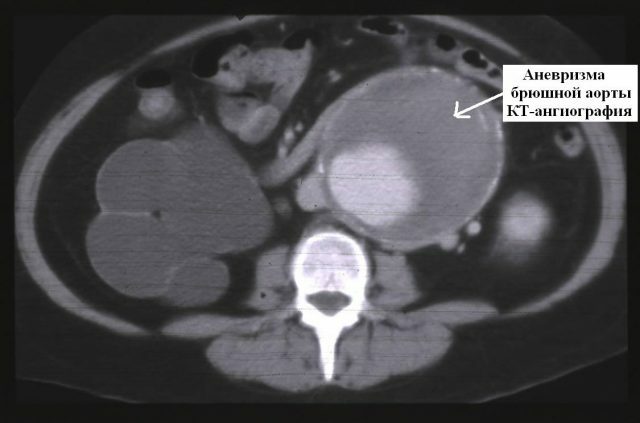To date, one of the most effective methods of surgical intervention, which are performed to eliminate atherosclerosis of the carotid arteries, is endarterectomy. As a result of it, the patency of the artery is completely restored. The first such surgical intervention was carried out in the United States in the 50s of the twentieth century. Thanks to this technique, the possibility of a full life of patients and a reduction in the percentage of their mortality after a stroke are restored.
Contents
- 1 What is endarterectomy
- 2 Advantages and disadvantages of
- 3 procedure Indications for operative intervention
- 4 Contraindications for endarterectomy
- 5 Preparation for intervention
- 6 What types of operation exist and how they are performed
- 7 Postoperative recovery phase
- 7.1 Drugs used in the postoperative period -gallery photo
- 8 When in the recovery period, you need to contact a doctor
- 9 Which osozhneniya may arise after the operation conducted by
- 10 Prevention of complications after surgery on his carotid artery
- 11 Expert Opinion on carotid endarterectomy - video
- 12 Reviews operated patients
- 13 Carotid endarterectomy( presentation) - video
What
Endarterectomy Endarterectomy is a surgery reconstructive type. The basis of the method is the restoration of normal blood flow through the arterial vessels, which were affected by such a disease as atherosclerosis. The essence of the operation is to remove from the "sick" artery an atherosclerotic plaque, which narrows the lumen of the vessel or blocks it.
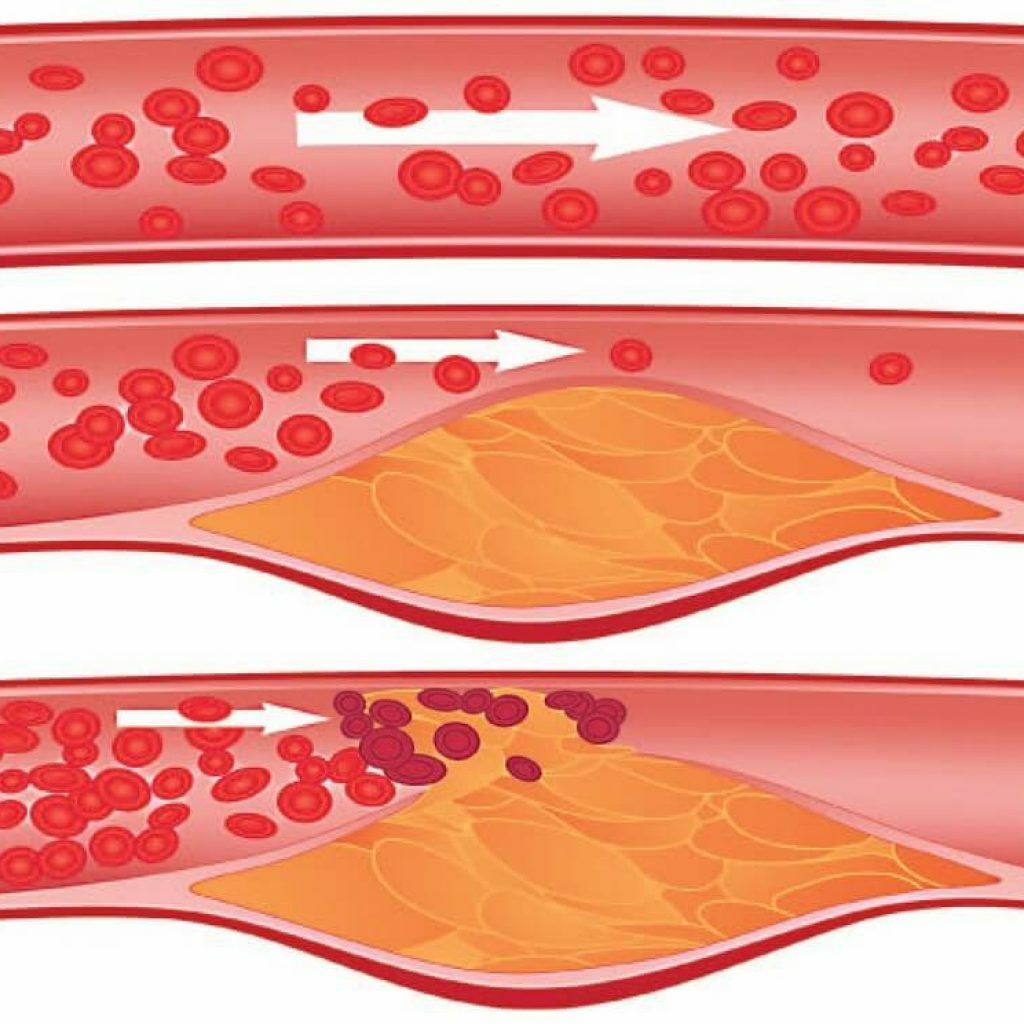
At the beginning of the formation of an atherosclerotic plaque, the blood flow partially overlaps, the fully formed plaque completely blocks the passage of blood through the vascular bed
The arterial endothelium under normal conditions should have a smooth and smooth surface. During the progression of atherosclerosis, there is a disturbance of blood flow due to narrowing of the artery lumen. As a result of further development of the disease, cholesterol, fats, calcium and other blood components are deposited on the vessel walls, resulting in atherosclerotic plaques. The latter lead to a loss of vascular elasticity and the appearance of brittleness of the vascular wall. Violation of the outflow of blood provokes insufficient blood supply to all organs and systems.
As evidenced by medical practice, endarterectomy is one of the most effective, simple and effective surgical operations.
Advantages and disadvantages of the
technique Medical experts assess the need for carrying out endarterectomy in different ways. Some believe that such a surgical intervention can be carried out even for preventive purposes, while others do not recommend surgery until conservative treatment can be used. Nevertheless, like other types of operative access, endarterectomy has its strengths and weaknesses. Among the undeniable advantages of this operation, you can include the following components:
The- technique is considered safe unlike other types of surgery;
- improves blood flow and total blood supply;
- completely cleans vessels of cholesterol and other substances;
- helps reduce the risk of developing a disease such as a stroke;
- in most cases yields positive results.
If we consider the drawbacks of this procedure, the following facts are among the weaknesses of the endarterectomy:
- In some cases, complications may occur during the operation. As a rule, we are talking about injuries of nerve endings. In addition, there may be a risk of a stroke.
- There is no absolute guarantee that the operated vessel will not be damaged again after some time.
Patients should weigh the pros and cons before deciding to lie under the knife of a vascular surgeon. It is believed that this type of intervention is one of the most difficult. All the risks that arise during it are directly related to the patient's age and health. An important factor is the experience of the surgeon who conducts the operation.
Indications for surgical intervention
This surgical procedure is suitable for all patients who have stenosis of the internal carotid artery. It is to such people that conducting an operation will help to significantly improve the quality of life.
For the purpose of the operation, there must be serious grounds that the attending physician determines after conducting the appropriate examinations.

If the lumen of the artery is narrowed by more than 70%, the patient is necessarily shown endarterectomy
Endarterectomy is indicated in cases if: the
- patient underwent an ischemic attack;
- lumen arteries narrowed by more than 70%;
- results of the conducted examinations show that plaques have ulceration or their formation occurs as thrombi;
- atherosclerotic plaques begin to develop on both sides;
- the patient had already suffered a stroke( in such cases, the operation can be prescribed to avoid relapse);
- on the background of hypertension develops atherosclerosis of the carotid arteries.
In Russia endarterectomy is carried out, as a rule, only in those cases when drug treatment does not bring the desired results.
Contraindications for endarterectomy
Like other operations, endarterectomy is performed only if there are no direct risks to the life of the patient. There are certain contraindications that do not allow using this method of surgical intervention.
Endarterectomy is contraindicated if:
- has suffered a myocardial infarction or stroke within the last 6 months;
- the patient has severe hypertension and serious heart disease;
- develops progressive neurological diseases and disorders;
- there are concomitant diseases in severe form, as the risk of complications in the postoperative period increases;
- is rapidly developing a severe stroke;
- have a circulatory disorder in a chronic form, especially if the disease occurs in the second or third degree of severity;
- the patient has oncological diseases;
- is progressing with Alzheimer's disease;
- age exceeds 70 years.
Preparation for intervention
Before surgery, the patient should be carefully examined, for which:
- blood pressure measurement;
- determination of lipid profile and clotting rates;
- removal of the electrocardiogram;
- carrying out echocardiography;
- determination of blood glucose level.
Twelve hours before the operation, it is not recommended to eat or drink.
In order to determine the exact site of atherosclerotic plaque localization, the physician can prescribe the following studies:
- of ultrasound of vessels. Allows you to determine the degree of filling of the blood vessel and the localization of the plaque.
- Magnetic resonance imaging of the head. Thanks to this method, you can see a clear picture of all soft tissues and skulls. MRI has the highest sensitivity level of all currently used diagnostic methods.
- Computerized tomography or angiography. They provide an opportunity to assess the degree of narrowing of the vessel, to bring out all the necessary parameters of the cholesterol plaque. To date, angiography is one of the most accurate and informative ways to obtain the necessary data for endarterectomy.
All this allows you to accurately assess the state of the vessels, the degree of disturbance of blood flow and other necessary parameters. The completeness of the information allows surgeons to plan the course of the operation correctly.
What types of surgery exist and how to perform them
Endarterectomy can be performed under general or local anesthesia. After the patient has been given the necessary dose of anesthesia, the doctor makes a small incision on the neck in the place where the occlusion of the vessel was detected. After that, the surgeon squeezes the artery and cuts it. Then, the plaque is eliminated. At the final stage, the cross-cut is sewn. This sequence of actions is the same for each type of endarterectomy. But each of them has its own nuances.
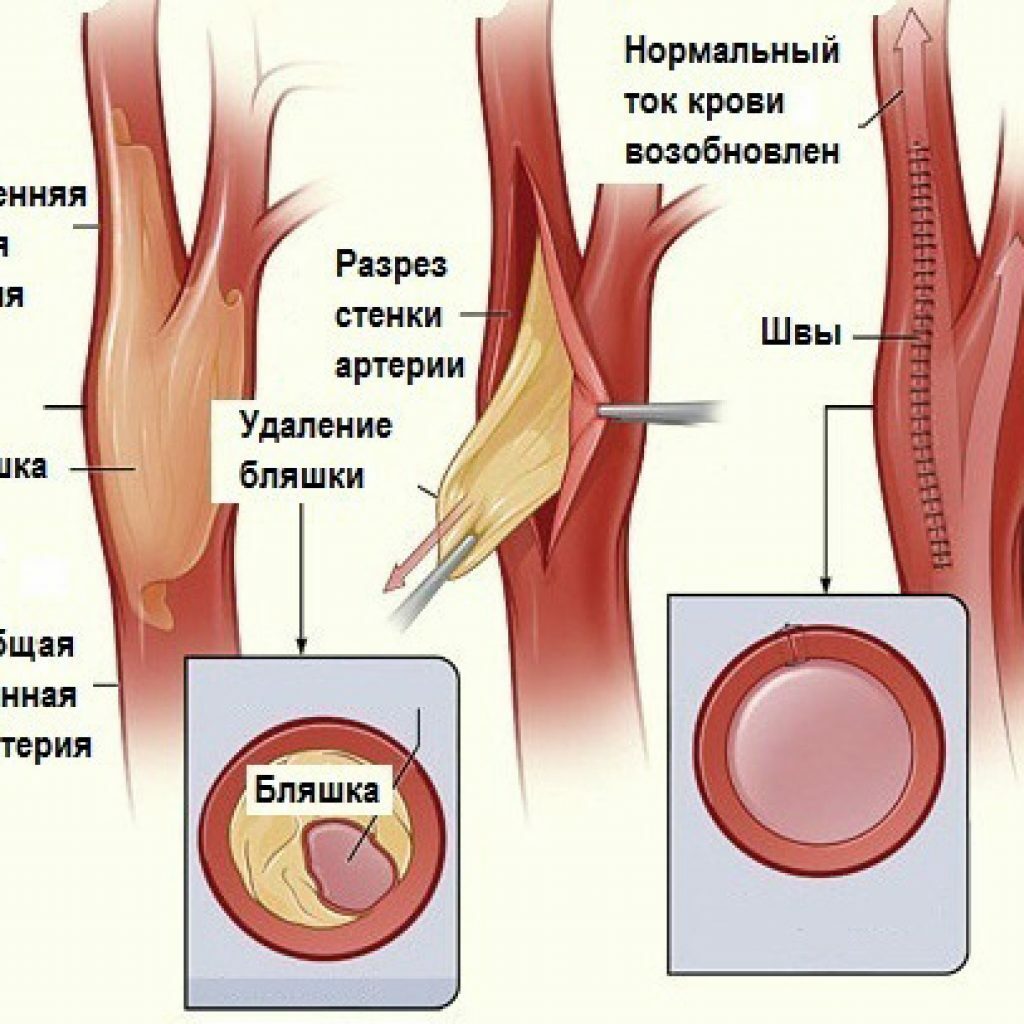
Initially, an incision is made on the arteries, then a plaque is extracted, and after the vessel is stitched
To date, several options for rapid access are used. Which of the varieties should be applied in this or that case, the surgeon decides directly during the operation after an incision is made on the carotid artery.
Endarterectomy can be performed in four ways:
- Direct( or open) endarterectomy. Is a classic version of this technique. Cholesterol plaque is removed using a special operating microscope and a magnifying glass. After the necessary cut is made on the artery, the plaque is scraped off from its walls. In the place where surgical intervention and cleaning took place, a special synthetic "patch" is put. The duration of the operation can be several hours, depending on the severity of the pathological process.
- Eversion. During the operation by this method, there is a transverse dissection of the artery, which was affected by cholesterol plaques. This artery is turned inside out to remove atherosclerotic deposits.
- Carotid endarterectomy. Used only to remove atherosclerotic plaques of the carotid arteries. This technique is particularly difficult to perform, as these blood vessels supply the human brain with blood. Their blockage and defeat can lead to disability or even death of the patient.
- Removal of the artery. Used when the artery is severely affected by atherosclerosis. In this case, it stretches to the required length and stitching. In addition, if the atherosclerotic plaque develops to large volumes, the deformed portions of the vessel can be replaced with a synthetic prosthesis.
Postoperative recovery phase of
After surgery, it takes time to normalize and restore blood flow. This may take several weeks.
After the operation, the patient is hospitalized from one day to one week, depending on the amount of endarterectomy performed. In the first day the patient is under continuous supervision of medical personnel. If there are any complications or manifestations of negative dynamics of his well-being, a transfer to the intensive care unit can be made.
After a day, the therapeutic course of treatment begins. It consists in taking the following medicines:
- Anticoagulant drugs that help suppress the activity of the blood coagulability system and do not allow the formation of thrombi. These drugs include Phenylline, Warfarin and Fragmin.
- Means that improve microcirculation. Thanks to them, the blood flow in the vessels improves and normalizes, the vessels and capillaries expand, the general condition of the blood improves. The following medicines have such properties: Trental and Cavinton.
- Nootropic drugs that promote the stimulation of mental activity and improve memory, and increase the resistance of the brain to a variety of stresses. Often appointed Piracetam, Actovegin and Fenibut.
- Analgesics for the removal of pain: Analgin, Baralgina, etc.
- Non-steroidal anti-inflammatory drugs for pain and inflammation removal: Ibuprofen, Paracetamol.
- Antibiotics to prevent the development of bacterial infections. In general, preparations of a wide spectrum of action such as Azitrox, Amoxicillin and others are used.
- Drugs that prevent thrombosis: Clopidogrel, Aspirin, Cardiomagnola and others.
- Means that regulate blood pressure: Kapoten, Enalapril and others.
Drugs used in the postoperative period - photo photo
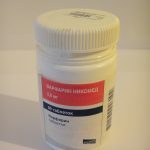 Warfarin suppresses blood clotting
Warfarin suppresses blood clotting 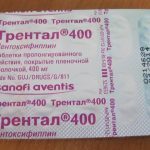 Trental improves blood circulation
Trental improves blood circulation 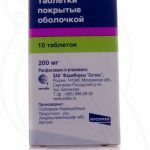 Actovegin normalizes brain function
Actovegin normalizes brain function  Analgin cleanses pain
Analgin cleanses pain  Ibuprofen removes inflammation
Ibuprofen removes inflammation  Azitrox kills bacterial infection
Azitrox kills bacterial infection  Kapoten normalizes blood pressure level
Kapoten normalizes blood pressure level After a weekafter endarterectomy, the patient is removed from the stitches, after which an extract is performed. A person who underwent an operation of this type should take medications for an extended period after discharge. Follow-up and examination by a doctor occurs one month after discharge. The specialist assesses the patient's condition and appoints the necessary examinations. First of all, the level of blood pressure and the condition of the seam are examined.
When during the recovery period, you need to contact a doctor
Sometimes, after discharge from a medical facility, the patient may feel a general deterioration in well-being. Negative symptoms may include the following:
- Increased body temperature, chills. This may indicate the attachment of a bacterial infection.
- Redness or swelling, development of bleeding in the operated site.
- Increased pain and the inability to stop it with pain medications.
- Nausea, vomiting for two days or more, developing after taking prescribed medications.
- Problems with the gastrointestinal tract, the appearance of diarrhea or constipation.
- Difficulty with urination.
- General weakness in the body, dizziness;
- Problems with eyesight.
- Problems with the respiratory system, the occurrence of coughing, dyspnea, or pain in the chest area.
If you experience one or more of the above symptoms, you should immediately contact your doctor to avoid complications.
What complications may occur after the operation
Despite the overall safety of the operation, there are risks of complications. Among the main hazards that can appear after endarterectomy are:
- Hypotension.
- Arterial hypertension.
- Occurrence of a hematoma at the site of the incision. The use of antiplatelet agents and heparin increases the risk of bleeding and the formation of subcutaneous hematomas. Very rarely, a large hematoma can lead to compression of the internal carotid artery and the cranial nerves adjacent to it. One of the serious complications in the formation of such a hematoma is the violation of airway patency, accompanied by the possibility of developing respiratory asphyxia or can become a potential focus of infection, which is why most large, strained hematomas of this area need surgical correction.
- Development of infection. In this operation, the penetration of bacteria into the wound is very dangerous for the patient's life, since the incision is carried out directly on the vascular bed. There is a complication most often due to non-compliance with the elementary rules of hygiene and antiseptics.
-
Damage to the wandering or trauma of the sublingual nerve. May be caused by excessive tension, traction or direct injury when using tweezers, clamps. The paralysis of the voice ligament on the side of the operation leads to hoarseness and impairment of the effective cough mechanism. One-sided damage to the vagus nerve or recurrent laryngeal nerve can occur without certain symptoms and signs, but may become an obstacle in planning interventions on the carotid artery from the other side.
- Hyperperfusion and cerebral hemorrhage( stroke). Most often manifested in the form of headache, migraine attacks or hemorrhage. As a rule, it manifests itself after the expiration of two days to a week after the surgical intervention. Avoid this complication is due to the correct choice of therapeutic treatment and stabilization of blood pressure level immediately before the operation. The probability of stroke varies from 3 to 6 percent. For comparison, without surgery, the patient is at risk of a stroke several times more.
To avoid any complications in the patient's health, measures are being taken to improve the safety of endarterectomy itself. During its carrying out, the patient's blood pressure is constantly monitored. The required level is maintained artificially with the help of special medications during the entire operation, when the blood vessels are jammed.
To avoid the development of hypertension several weeks before the scheduled date of surgery, the doctor may prescribe the use of certain medications. In this case, quitting smoking makes it easier to transfer the operation and contributes to an easier flow of the postoperative period.
Preventive maintenance of complications after operation on a carotid artery
Preventive measures should be applied not only in the recovery period, but also in the future. Some patients will have to radically change their habitual way of life in order to maintain their health.
For normal recovery of the body after a surgical procedure, it is absolutely necessary to take all medications, follow all the instructions of the attending physician without fail, follow the prescribed dietary recommendations to prevent the formation of new atherosclerotic plaques. The basis of the diet should be products of vegetable origin, which contain a large amount of fiber, complex carbohydrates, vegetable fats, vitamins and trace elements. It is necessary to refuse fat and heavy food.
One of the main preventive measures is to stop smoking and drinking alcoholic beverages. It is smoking people who are more exposed to the development of possible complications and the risk of relapse. Doctors recommend spending more time in the open air, walking and playing sports. Such simple rules will help to maintain the patient's health, improve overall health.
Expert opinion on carotid endarterectomy - video
https: //youtube.com/ watch? V = lQNYaLI2Vvg
Reviews of operated patients
Carotid endarterectomy( presentation) - video
Endarterectomy is one of the most effective operations and allows you to restore blood flow to the affected atherosclerosis vessels. To date, many experts prefer it to her. Surgical intervention allows you to get a positive effect much faster than conservative treatment. So far, there are no such medications that will help to completely rid the patient of atherosclerosis and cholesterol plaques. Endarterectomy allows for a short time to restore vascular health, extend the life of the patient and prevent the development of stroke or myocardial infarction. Its conduct in public hospitals is free of charge in the framework of CHI or funded by a quota from the Ministry of Health of the Russian Federation.



